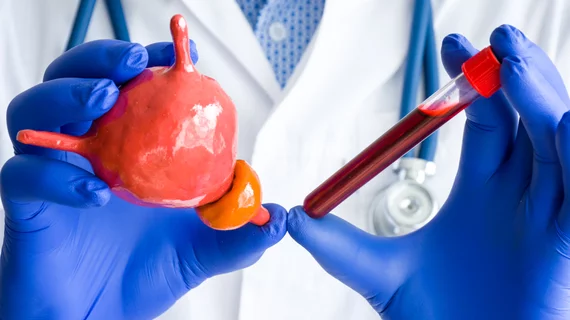Collaborative bolsters prostate MRI quality, with 1 site realizing $559,000 in reimbursement gains
Collaborating across multiple organizations has helped radiology providers bolster prostate MRI quality, with one site realizing nearly $559,000 in reimbursement gains, according to research published Wednesday.
Prostate MRI quality can vary considerably among institutions, with about one-third of scans deemed insufficient for accurate cancer detection and localization, experts wrote in JACR [1].
To address this, the American College of Radiology has formed the Prostate MR Image Quality Improvement Collaborative. The initiative involved teams from five U.S. organizations, who were trained on a structured improvement method. Participants audited images using the Prostate Imaging Quality system, identified barriers and tested interventions.
Across nearly 2,400 exams audited, the average weekly rate of prostate MRIs meeting quality criteria increased from 67% (with a range of 60%-74%) at baseline up to 87% (80%-97%). Some of the most commonly deployed interventions included protocol adjustments, patient prep instructions and personnel training.
“Given the increasing use of prostate MRI in clinical practice, widespread adoption of the methods developed by the participating sites can potentially benefit hundreds of thousands of patients in the U.S. annually,” lead author Andrei S. Purysko, MD, a radiologist with the Cleveland Clinic, and colleagues concluded. “Practices of all types who desire a similar level of performance improvement in prostate MRI image quality are encouraged to join the collaborative.”
ACR first invited organizations to apply for the program in September 2021. All organizations participated in 10 two-hour sessions to learn about key concepts around prostate MRI quality. They utilized the A3 method—a structured problem-solving approach that uses a structured quality improvement template to facilitate documentation, build consensus and communicate progress among participants.
Based on root-cause analyses, all five teams identified geometric distortion of diffusion weighted images from rectal air, along with a lack of image quality standards, as key concerns. Four of the five teams also pinpointed noncompliance with Prostate Imaging Reporting and Data System (PI-RADS) technical standards as another issue to address. Accordingly, the authors noted, the most common drivers used to organize interventions focused on:
- Up-to-date imaging protocols compliant with PI-RADS (or optimized for a given scanner’s capabilities).
- Timely, clear, concise and consistent patient preparation instructions.
- Personnel training.
- MRI quality control system with real-time and periodic analysis.
In a follow-up survey, 96% of participants agreed or strongly agreed that the initiative contributed to professional growth and improved their daily work. All agreed that the program was a “very positive experience and empowered them to do future improvement projects,” the authors reported. Three organizations achieved shorter prostate MR exam times, and one participant reported a time savings of 325 hours for their scanner.
“Given the growing demand for prostate MRI, this potential increase in efficiency provides an avenue to improve patient access to this exam,” the authors wrote. “For organizations in a pay-for-service environment, this also translates to financial gains; one participating site estimated that the shorter post-intervention scan times could result in an annual reimbursement gain of $558,976.”
The second cohort for the collaborative is already underway, using key learnings from the first to fast-track its project. You can read much more about the work at the link below.

